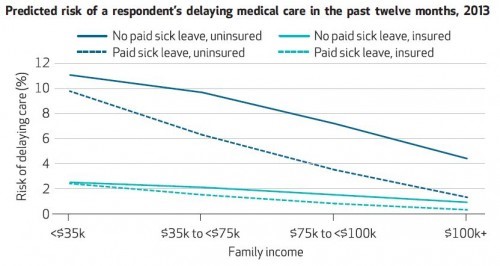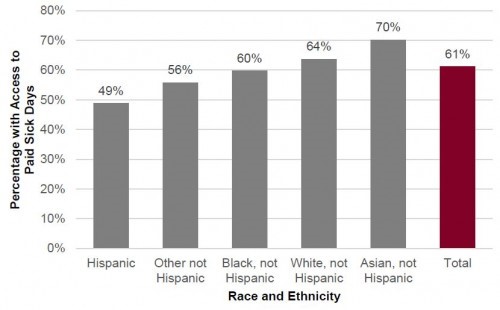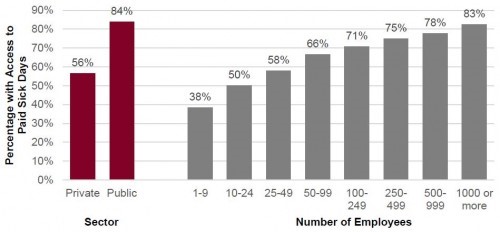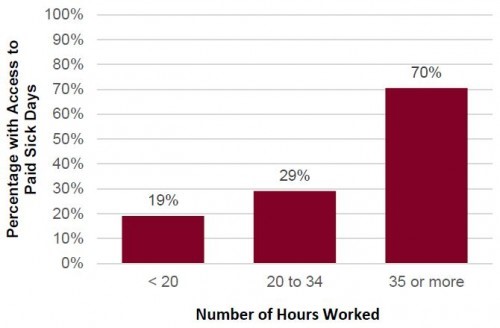As Aaron and I have pointed out many times, lack of health insurance is not the only barrier to timely access to health care, let alone high quality health care. Another barrier, rarely discussed, is paid sick leave for workers.
In Health Affairs, LeaAnne DeRigne and colleagues document the access challenges workers without paid sick leave experience. Using the 2013 National Health Interview Survey — restricted to paid workers — they find that workers lacking paid sick leave are three times more likely to forgo care.
The chart below illustrates just one of their findings. The vertical access is the percent of respondents delaying medical care in the past 12 months. The horizontal access is family income. Dashed lines are for respondents with paid sick leave; solid lines are for those without it. Darker aqua (top two lines) are for uninsured respondents; lighter aqua (bottom two lines) are for insured respondents.

As the chart shows, higher lower income individuals are more likely to delay care, whether insured or uninsured. Fewer financial resources, worse access to care. Uninsured respondents are also more likely to delay care. Insurance improves access. (Also, those more likely to need care may opt for coverage.) For any income and for either insurance status, respondents without paid sick leave are more likely to delay care. This is consistent with the idea that the higher cost of care — and not getting paid is a cost — is a barrier to care. (Although, it is possible that healthier individuals opt for jobs without paid sick leave. These figures are risk adjusted for health, however.)
Another point made by the paper is that paid sick leave (or lack of it) is distributed unvenly by demographic characteristics. This is illustrated in several charts in an Institute for Women's Policy Research fact sheet, which is also based on the 2013 National Health Interview Survey data, restricted to workers.
As shown just below, 61% of workers have paid sick leave. White and Asian non-Hispanic workers are more likely than average to have such a benefit. Other races are less likely.

As shown in the chart just below, the public sector is far more likely than the private sector to offer paid sick leave, as are larger employers.

Part time workers (those working fewer than 35 hours) are far less likely to have paid sick leave, as shown below.

The U.S. is one of the few industrialized countries that lacks universal paid sick leave, though a few cities and states mandate it. Part time, lower income, minority U.S. workers are less likely to have such a benefit. It limits access to care, even for the insured.